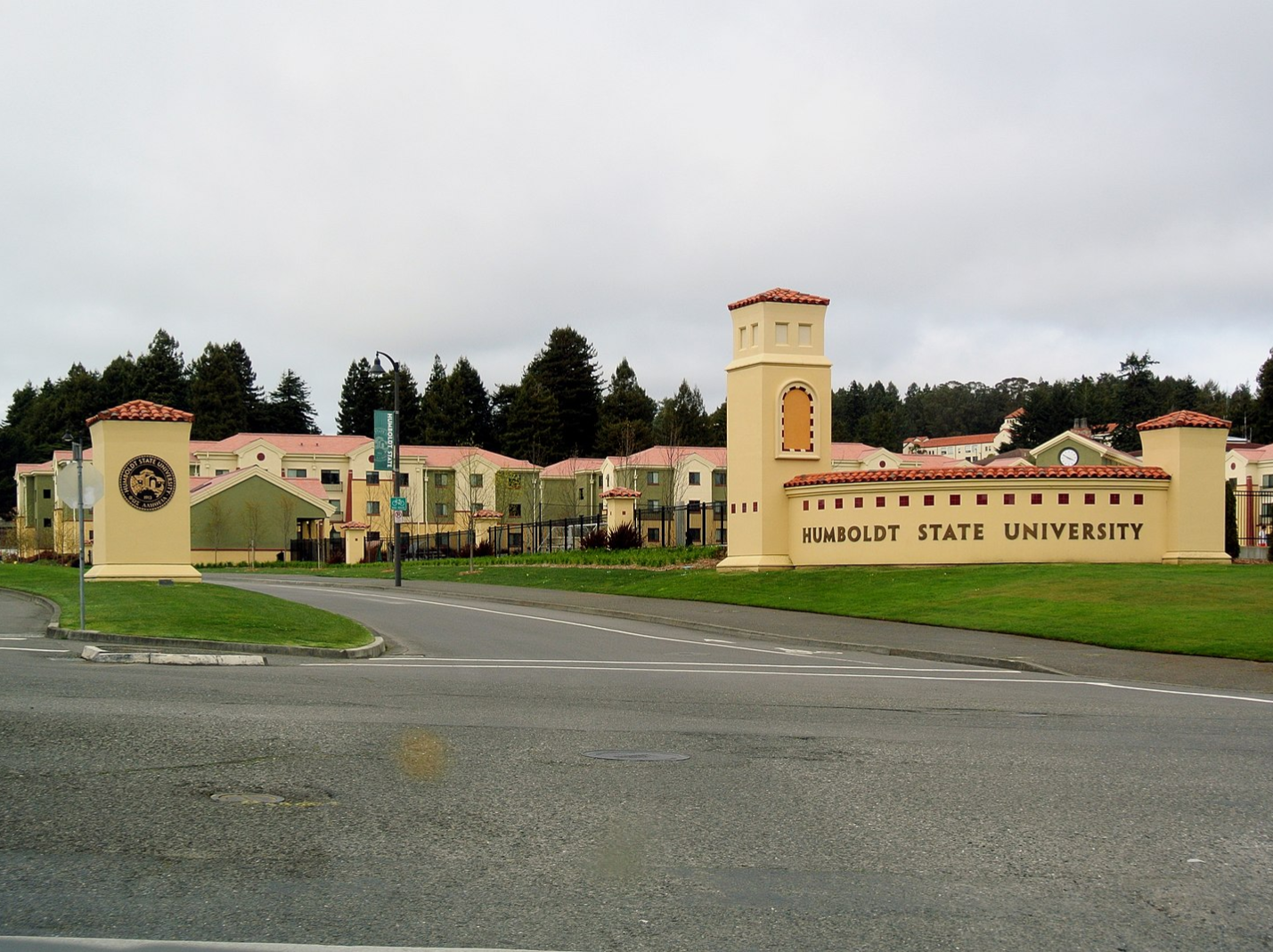
Arcata is a small town lying behind the Redwood Curtain of Northern California, about two hundred and fifty miles north of San Francisco. It was a place where diversity already existed, yet nobody had to talk about it.
Much of this diversity was due to the location of Humboldt State University, a four-year state school that attracted intellectual talent from across the United States, resulting in a unique culture that blended traditional Americana with a back-to-the-land ethos, characterized by eccentric artists and environmentally minded professors.
There was a statue of President William McKinley, which had survived the 1906 San Francisco earthquake and had been gifted to Arcata by an Armenian immigrant in the central square. Kids could ride through town without a worry in the world. Everyone shopped at the local farmers’ markets, and their children all played on the same sports teams. There was also a noon bell siren—a vestige of the World War II era—which sounded every day, providing a connection to the past and a familiar aura to residents living this small-town dream.
It featured watermelon-eating contests, blackberry picking, swimming in the local rivers, friendly neighbors, and a small-town community feel. Fourth of July celebrations with the American flag striking clear, fire-engine rides, rag-tag bands, hot dogs, and baseball games.
All of this has gone with the wind.
Over the last few decades, Humboldt State University began implementing affirmative action-based recruitment policies targeting inner-city minorities. In 2022, the university was formally designated a Hispanic-serving institution, and its name was changed to Cal Poly Humboldt. The expressed goal of this new designation was to transform Humboldt State University into a highly innovative institution, with state and federal funding streams based on advancing equity policies for Hispanic and minority populations.
Therefore, instead of a university open to all students that served as a conduit for intellectual growth and unique ideas, Cal Poly Humboldt became a bastion for ideology-based equity policies, providing special privileges and inducements for students and staff from outside the region.
Higher education became an affirmative action. Education became indoctrination. Student services became social services, and professional development became arrested development. Cal Poly Humboldt is now a place where partisan politics take precedence over academic policy.
Just as Humboldt State University had provided a steady stream of culture into Arcata, Cal Poly Humboldt has done the same, yet the results are now not a unique blend of peoples and ideas, but rather an intellectual and ethnic monoculture that seeks to transplant an urbanistic socially engineered culture upon the long-time residents of the small town.
Administrators of Cal Poly Humboldt announced that the university was planning to double its student population over the next decade, vaunting the economic benefits to the townsfolk and the local governments, yet failing to account for the fact that there were already too few jobs in the region, nor that there was a lack of housing for local residents.
The solution was low-income housing apartments in the center of town, and a Soviet Bloc-style dormitory towering above the local neighborhoods, marring the view of the scenic redwood hills that they had once enjoyed.
Adding to this is the fact that Southern California real estate investors have queued up to buy a significant majority of the available housing in Arcata, paying prices above property value estimates, thereby outcompeting local citizens for the opportunity to buy a home. These investors are eager to capitalize on the housing shortage and rising rental costs resulting from the Cal Poly expansion, regardless of the effect on local residents struggling to make ends meet.
Thus, in a rather ironic twist, the tide of graduating minorities will compete for the limited number of local jobs, many of which are affirmative action hiring positions in city, county, and state governments, as they will not want to return to the crime-ridden urban areas from which they originated.
This equity-based agenda by Cal Poly Humboldt has also attracted many non-minority domestic students interested in advancing social justice. This is doubly ironic, as the end result is the same: locals are being displaced by Cal Poly’s equity-based mission, which is, in fact, antithetical to social justice.
Compared to California and the United States, Humboldt County has higher poverty rates for every race and ethnicity. Yet it is these same local citizens who are being forced out by those advancing social justice.
Consider, for a moment, dear reader, if the coin were flipped: A host of domestic students from America’s majority were being enrolled at Cal Poly Humboldt, and Arcata was a historically minority town? Equity advocates would label it gentrification, because that is precisely what is occurring, yet when a small town’s citizens are largely of European descent, regardless of how poor they may be, the gentrification logic need not apply.
Thus, the low-income housing over the decades will not be for the students during their time at university, but rather for the young residents who decide to stay local. Indeed, many locals who are just starting families will be excluded from job prospects due to affirmative action hiring policies and will struggle to find work. They will also be pushed out of the market to buy affordable homes in their own town, and will either end up relocating or renting.
If they decide to rent, they will likely work in lower-wage jobs, regardless of their talents, thus ending the American dream that was once possible only a decade before.
Indeed, Cal Poly recruitment efforts have ramped up for these privileged minority students, focusing on highly urbanized areas such as Oakland, California, and East Los Angeles, both regions known for gang violence and high crime rates. Thus, pensioners and families who have already invested in homes in quiet, kid-friendly neighborhoods will now be surrounded by scores of minority students taken from some of the most dangerous areas of the state.
Locals seeking a job at Cal Poly Humboldt are now passed over for Hispanic and African American candidates—despite qualifications and experience—in the name of equity and diversity. Indeed, the job posters reflect these lowered standards, with degree requirements and academic expertise watered down in favor of “lived experiences,” and “Spanish speaking highly desired.” This has and will harm the quality, efficiency, and competence of the staff leading the institution and the professors educating California’s youth.
How could it not, when one hires based on ethnicity over talent?
Higher Education administrators and the institutions they lead have a legal duty to be ideologically impartial as well as non-partisan, as universities must provide an open atmosphere for students and professors to express differing perspectives and viewpoints without fear or favor. Leadership flows from the top down, and thus, as Cal Poly has accepted equity as a mission, it has created a pseudo-intellectual orthodoxy that is non-conducive to learning or the pursuit of truth, but rather a predetermined, dogmatic goal.
The result of this progressive new plan to create diversity and to transplant inner city Hispanics and minorities into a small town has led to the destruction of a way of life and a culture.
The McKinley statue has since been vandalized and removed, and the noon bell has been silenced. Historic features have fallen prey to a modern form of iconoclasm. Graffiti mars the local parks, and kids stay close to home, monitored by parents. The feel of Arcata has changed, as has the way of life.
This is a familiar narrative in small towns all across America, where unique cultures have roots and connections to the past and to one another, providing depth and color to everyday life. These communities are now being deconstructed and erased, much like the long memory of Western history. These everyday Americans now seek somewhere, anywhere, but there is nowhere to go. They are the forgotten ones.
Some may say that the Great Replacement and the Great Realignment are not real, but tell that to the native sons and daughters of my hometown.
Humboldt State University Entrance by Adbar on Wikimedia Commons

This article paints an idyllic and somewhat inaccurate view of Humboldt county. Before marijuana was legalized in California, it was estimated up to a third of the county’s economic activity was from marijuana–i.e., illegal activity (and the author is concerned about the “crime-ridden urban areas from which they originated”). Furthermore, if one drove around Humboldt County in those days, one would find boarded up houses with gun slits reminiscent of the crack houses in the “crime-ridden urban areas”. And woe unto the hiker who walked into a marijuana field. In fact, google
“deaths in humboldt county protecting marijuana fields”, and the AI pops up with
>
Violence in the marijuana culture: Decades ago, violence, intimidation, and murder were acknowledged as part of Humboldt County’s marijuana culture. In the early 1980s, the sheriff’s office investigated nine marijuana-related killings within a single year.
English Americans: 46.5 million (19.8% of the White American population).
German Americans: 45 million (19.1% of the White American population).
Irish Americans: 38.6 million (16.4% of the White American population).
<
so Hispanics are not a concern _if_ they are assimilated into American culture. Typically, they are, with third generation Hispanics speaking little to no Spanish. This should be the concern of Americans, not the particular country of origin.
What is meant to be suggested by the “Red Curtain”?